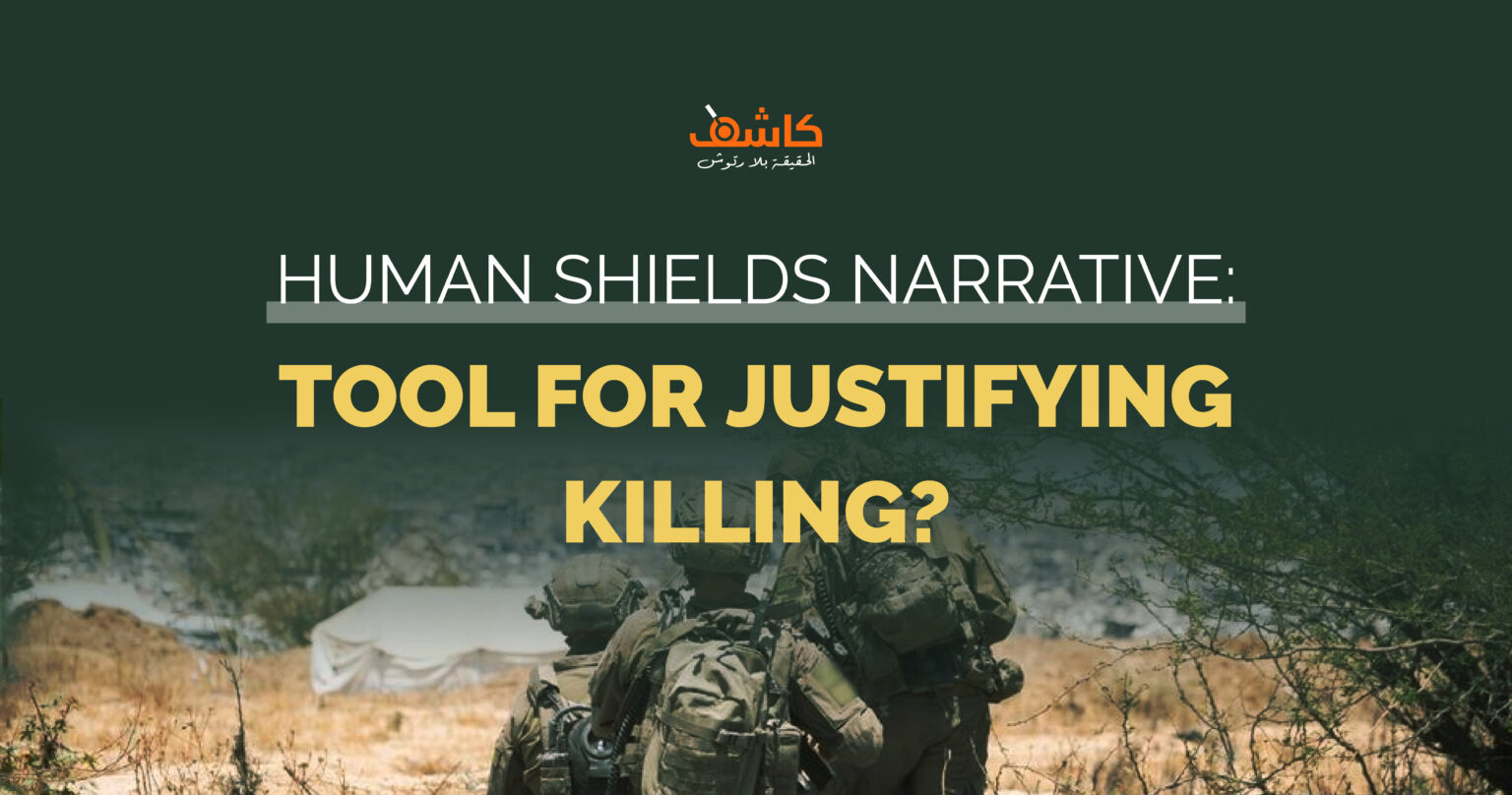Kashif – Basel Ja’rour
The narrative of “human shields” is among the most frequently invoked in the coverage of armed conflicts and wars. It is commonly used to justify attacks on civilians under the pretext that they are being used as cover by armed groups. This narrative is often presented in international media as a fact, without independent verification.
In a report published by The Times of Israel on 2 November 2023, the Israeli army accused Hamas of using over 100 women and children as human shields in Jabalia. However, no independent investigation has substantiated this claim. Similarly, in a video report by CBS News on 8 November 2023, the Israeli army showcased images allegedly depicting weapons near UN facilities and schools in Gaza—yet these images were not supported by independent verification or a response from UN bodies.
This repeated use of the human shields narrative—without accountability or verification—shifts blame from the perpetrator to the victim. It provides moral justification for the aggressor while stripping civilians of their protected status under international law.
It is important to note that deconstructing this narrative does not imply denying the possibility that civilians may be used as human shields in isolated incidents. However, any such claims must undergo strict and independent documentation. Suspicion or unverified allegations should never serve as blanket justification for mass bombings.
A human rights report documented four airstrikes in Rafah in December 2023 and January 2024 that killed 95 civilians, including 42 children. No evidence indicated that the targeted locations were being used for military purposes.
Language is not neutral. Terms like “human shields” do not merely describe events—they teach us how to interpret them. They reshape the relationship between actor and victim. The phrase carries a political and propagandistic history and is often invoked more to justify violence than to provide an accurate legal description.
In Zionist media discourse, the term is not used to criminalize the perpetrator, but rather to legitimize attacks on civilians themselves. International law classifies the use of civilians as human shields as a war crime and prohibits targeting civilians even in such cases.
Crucially, the “human shields” narrative does more than distort facts; it erodes the moral framework that governs the relationship between aggressor and victim. It provides a moral cover that legitimizes the aggressor’s actions and upends the logic of accountability—even when no evidence of military activity is present at the targeted sites.
This type of discourse reconfigures the image of the victim into a perceived threat to be neutralized. It dehumanizes the individual, transforming them from a subject of protection to one of suspicion. Moreover, it undermines the ability of human rights organizations to hold perpetrators accountable.
Throughout media coverage, this narrative is reproduced in various forms, but always with the same function: to justify violence, blame the victim, and neutralize public sympathy. This makes its deconstruction a moral necessity, not merely a critical exercise.
Documenting these media examples not only highlights the recurring pattern in reproducing the narrative, but also exposes how public discourse is manipulated to reassign responsibility—making civilians a legitimate target by embedding them within a “security” framework. Sometimes, it is by listening to what is left unsaid that we begin to see the truth—not as it’s presented, but as it is.
All of this affirms that the “human shields” narrative is not just a linguistic tool, but a mechanism for reshaping the ethical and political landscape of conflict. When invoked without independent verification, it becomes a cover for legitimizing attacks on civilians and redefining the victim as a threat.
This narrative not only undermines accountability—it also weakens the international community’s ability to exert pressure and demand justice. It dries up sources of solidarity and shifts the conversation from civilian protection to justifications for their targeting.
In such a context, deconstructing this narrative is both a political and moral imperative—not merely analytical work. When tragedy is reduced to a “security” discourse, reality is reconstructed in a way that exonerates the perpetrator, indicts the victim, and transforms suffering into justification rather than a call for justice.
On the other hand, an investigation by the Israeli newspaper Haaretz revealed that the Israeli army has been systematically using Palestinians in Gaza as human shields during tunnel and building searches. This practice, according to the report, occurs with the knowledge of the office of the IDF Chief of Staff, Herzi Halevi, and senior army officers.
Testimonies from soldiers and commanders confirm that Israeli forces have been transferring Palestinian civilians—not suspected of being combatants—to various army units. These civilians are detained and then sent to accompany Israeli troops during tunnel and home inspections. The individuals used are often in their twenties, dressed in Israeli military uniforms but easily distinguishable by their sports shoes, bound hands, and fearful expressions.
The investigation also found that this practice is repeated regularly, with soldiers selecting suitable Palestinian youth for such missions and transferring them to combat brigades active in the Strip.
This was also confirmed by the American news agency Associated Press, which interviewed Palestinian detainees and Israeli soldiers. The findings revealed that Israeli forces are systematically compelling Palestinians to act as human shields.


